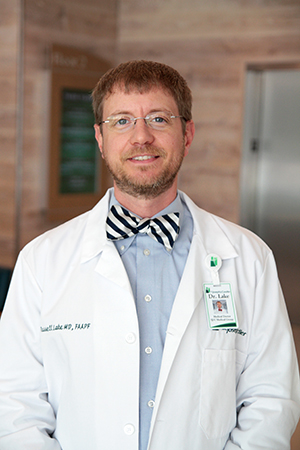QUIZ: Are you feeling SAD this winter?
Miscellaneous
Dec 17, 2024
Seasonal affective disorder is a type of depression that affects millions of Americans. Take our quiz to learn more.
If you notice you feel down or even depressed when the seasons change and it’s darker earlier, you may have seasonal affective disorder (SAD). SAD is a form of depression that affects millions of Americans each year.
 “Seasonal affective disorder is a subtype of an underlying depression disorder, or in some cases bipolar disorder,” explains Dr. Russell Lake, family medicine physician with St. Joseph’s/Candler Primary Care in Richmond Hill. “With this condition, a patient’s depressive symptoms demonstrably follow a cyclical, seasonal pattern each year.”
“Seasonal affective disorder is a subtype of an underlying depression disorder, or in some cases bipolar disorder,” explains Dr. Russell Lake, family medicine physician with St. Joseph’s/Candler Primary Care in Richmond Hill. “With this condition, a patient’s depressive symptoms demonstrably follow a cyclical, seasonal pattern each year.”
Take our quiz to learn more about this real condition and ways you can manage it.
- People with seasonal affective disorder (SAD) feel depressed only during the winter.
A. True
B. False - Females are more likely to develop SAD than males.
A. True
B. False - SAD can be hard to diagnose because its symptoms are like those of other illnesses.
A. True
B. False - The hormone estrogen may play a role in SAD
A. True
B. False - SAD is more common in northern parts of our country.
A. True
B. False - One symptom of summer SAD is weight loss.
A. True
B. False - A good way to feel better when you have winter SAD is to get outdoors as much as possible.
A. True
B. False - SAD treatment often starts with light therapy.
A. True
B. False
Answers:
- B. False. People with SAD have depression during a certain season of the year. Most people with SAD are depressed during the fall and winter months. Less often, other people with SAD are depressed during the spring and summer. This form is sometimes called reverse SAD or summer SAD. The symptoms can range from mild to so severe that they interfere with daily functioning.
- A. True. SAD can affect anyone. But people assigned female at birth, teens, and young adults seem more likely to get it. People with SAD also tend to have a family member with mental illness, such as depression or alcohol abuse. To be diagnosed with SAD, a person must have symptoms of depression that occur during certain seasons for at least 2 years.
- A. True. The symptoms of SAD can be confused with symptoms of other illnesses. These include hypothyroidism and viral infections such as mononucleosis.
- B. False. Changing levels of the neurotransmitter serotonin may play a role in SAD. The sleep hormone melatonin may also play a role. Melatonin has been linked to depression. The body makes more melatonin in the dark. So the shorter, grayer days of winter boost levels of melatonin. Many people with SAD have low levels of vitamin D and use nutritional supplements. Vitamin D supplements have shown mixed results in treating SAD.
- A. True. SAD is more common in people who live farther from the equator. Overcast days also make a person with SAD feel worse.
- A. True. Other symptoms of summer SAD include sleeping problems, anxiety, restlessness, and poor appetite. For those with winter SAD, symptoms include feeling "blue" during the fall and winter, a craving for sugary or starchy foods, irritability, trouble focusing, anxiety, weight gain, and oversleeping.
- A. True. Getting outdoors regularly will let you get more sunlight. This can help prevent SAD and improve your symptoms. You can also move your furniture and window drapes around during the fall and winter to let as much sunlight through windows as possible.
- A. True. Light therapy means using a full-spectrum fluorescent light from a special SAD lamp. You use the lamp for a certain amount of time, often for 20 to 45 minutes a day in the morning. Your healthcare providers will tell you the amount of time needed. They may also prescribe medicines or talk therapy (often cognitive behavior therapy or CBT) along with the light therapy. Treatment is started in the fall, before symptoms begin. Treatment is slowly stopped in the spring.
Source: Staywell Health Library at healthlibrary.sjchs.org